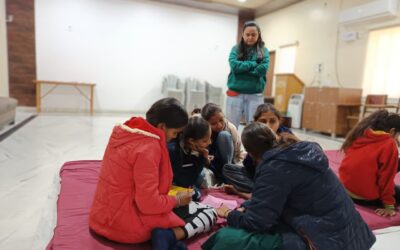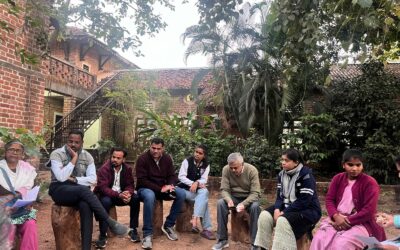The primary cause of climate change is the greenhouse gas (GHG) emissions from burning fossil fuels.The most widely accepted solution is installing Renewable Energy (RE), which reduces emissions and mitigates climate change. We promote RE as the ‘one-stop solution’ for environmental degradation and climate crises because sources like solar and wind do not emit GHG and lower carbon footprints. Technological advancements have also made RE more accessible and affordable.
I once believed that fossil fuels were undoubtedly harmful, and the only viable solution was the widespread installation of RE. To me, renewable energy seemed like a hero, a savior capable of rescuing us from the villainous effects of fossil fuels. The narrative seemed clear and straightforward. Fossil fuels were the root cause of the climate crisis, and renewable energy was the answer.
However, this perspective shifted after I conducted secondary research for an Environmental Impact Assessment (EIA) case study at the Pavagada Solar Park, less than 200 kms from my hometown, Bengaluru. EIA is a tool commonly used to understand potential environmental threats associated with developmental interventions. EIA has now expanded to incorporate social aspects such as built infrastructure, occupational structures, power dynamics, and socio-economic inequalities, making it Environmental and Social Impact Assessment (ESIA).
Pavagada Solar Park

The solar park in Pavagada was established by Karnataka Renewable Energy Development Ltd (KREDL) in 2015 in Tumakuru district, Karnataka. KREDL selected this semi-arid region for its low rainfall and abundant sunlight, ideal for solar energy production. Initially, the project’s potential to generate 2,050 MW of clean energy, significantly reducing fossil fuel reliance, fascinated me. However, further exploration of the park’s environmental and social impacts revealed a more complex situation.

This park is the third largest solar park in the world, the second largest in India, and produces a significant amount of renewable energy. However, the EIA revealed several unintended consequences. The large-scale acquisition of 13,000 acres of land displaced local communities, many of whom had relied on agriculture for their livelihoods. Local residents who sustained themselves through farming and pastoralism in this semi-arid region lost their income. Authorities also failed to fulfil promises of compensation, including a rent of Rs 21,000 and job opportunities. While the state promised employment in the solar park, it did not provide villagers with the technical skills needed to manage PV cells.
Intricacies Of The Solar Park
The government’s land acquisition methods raised many concerns. Authorities manipulated men into selling their land while intoxicated and excluded women from decisions. As you cn read in this article, bulldozing for solar panel installations destroyed lakes, ponds, and rajakaluves (local water canals).
This destruction made agriculture impossible and wiped out pastures, leading to unemployment among the youth and increased alcoholism. Women and girls were forced into human trafficking and were victims of domestic violence. Dalit communities, already landless laborers, received no compensation and suffered the most (Rao). Additionally, the water tank became contaminated with fluoride from cleaning solar panels. Discharged untreated, this fluoride caused fluorosis, leading to disability and forced migration. The government, however, failed to address all these consequences during the planning and implementation of the solar park.
Reductive Seduction Of A Complex Issue

The Pavagada case exemplifies the reductive seduction of other people’s problems. Reductive seduction happens when people oversimplify other’s complex issues, especially in less privileged settings, assuming that quick, straightforward solutions can easily solve these problems. This approach often disregards the cultural, social, political, and economic nuances of the local context and overlooks the complexities of the affected communities. Although well-intentioned, this approach can lead to ineffective or even harmful interventions that fail to address the root causes of the problems in hand.
In the case of Pavagada, ‘others’ refers to the locals, on whom simple solutions were used for the complex task of installing RE. Here, the solar park installation has caused significant harm, undermining the local community’s well-being. No research on the impact of RE was done, and the community was excluded before and during the installation process. While the project succeeded in scale, the State ignored the community’s needs in its drive for clean energy.
This case study taught me that while renewable energy is vital for combating climate change, it has its challenges. The transition to clean energy demands a nuanced approach, balancing benefits with trade-offs. The community was excluded from negotiations and decisions in Pavagada. In contrast, the success of solar projects in Manyachiwadi, Maharashtra (although small-scale), highlights the value of research and community engagement. These examples show that renewable energy remains crucial but is not a flawless solution. We must implement it thoughtfully, considering its social and environmental impacts to build a more sustainable and just society.
Also read: The Inspiring Journey Of Manyachiwadi




0 Comments